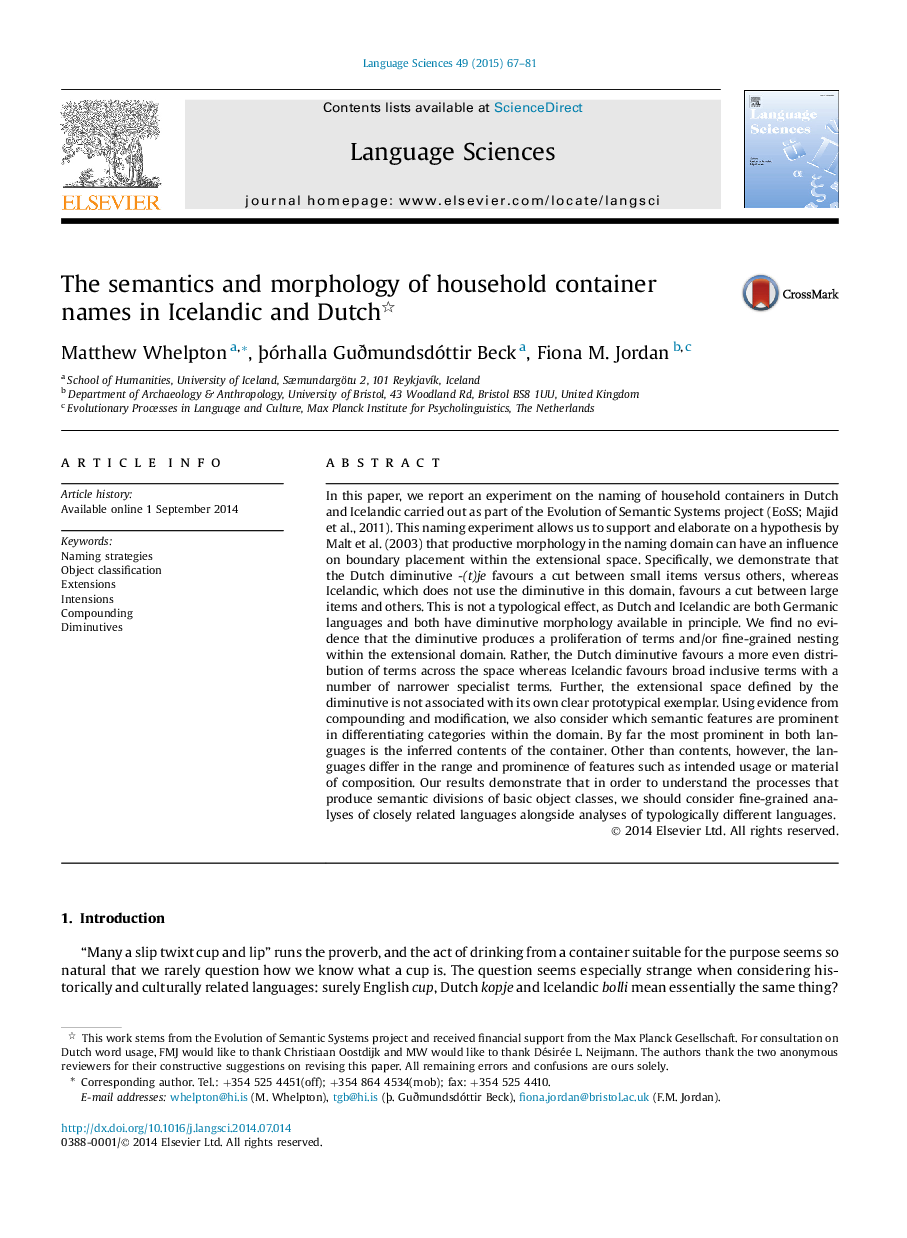| کد مقاله | کد نشریه | سال انتشار | مقاله انگلیسی | نسخه تمام متن |
|---|---|---|---|---|
| 1103055 | 1488153 | 2015 | 15 صفحه PDF | دانلود رایگان |
• Naming data in Icelandic and Dutch was collected for 67 household containers.
• Productive morphemes influence the placement of extensional boundaries.
• The extension of the diminutive is not associated with its own prototype.
• Productivity need not produce term proliferation or fine-grained nesting.
• Typical contents are cross-linguistically prominent in container naming.
In this paper, we report an experiment on the naming of household containers in Dutch and Icelandic carried out as part of the Evolution of Semantic Systems project (EoSS; Majid et al., 2011). This naming experiment allows us to support and elaborate on a hypothesis by Malt et al. (2003) that productive morphology in the naming domain can have an influence on boundary placement within the extensional space. Specifically, we demonstrate that the Dutch diminutive -(t)je favours a cut between small items versus others, whereas Icelandic, which does not use the diminutive in this domain, favours a cut between large items and others. This is not a typological effect, as Dutch and Icelandic are both Germanic languages and both have diminutive morphology available in principle. We find no evidence that the diminutive produces a proliferation of terms and/or fine-grained nesting within the extensional domain. Rather, the Dutch diminutive favours a more even distribution of terms across the space whereas Icelandic favours broad inclusive terms with a number of narrower specialist terms. Further, the extensional space defined by the diminutive is not associated with its own clear prototypical exemplar. Using evidence from compounding and modification, we also consider which semantic features are prominent in differentiating categories within the domain. By far the most prominent in both languages is the inferred contents of the container. Other than contents, however, the languages differ in the range and prominence of features such as intended usage or material of composition. Our results demonstrate that in order to understand the processes that produce semantic divisions of basic object classes, we should consider fine-grained analyses of closely related languages alongside analyses of typologically different languages.
Journal: Language Sciences - Volume 49, May 2015, Pages 67–81
